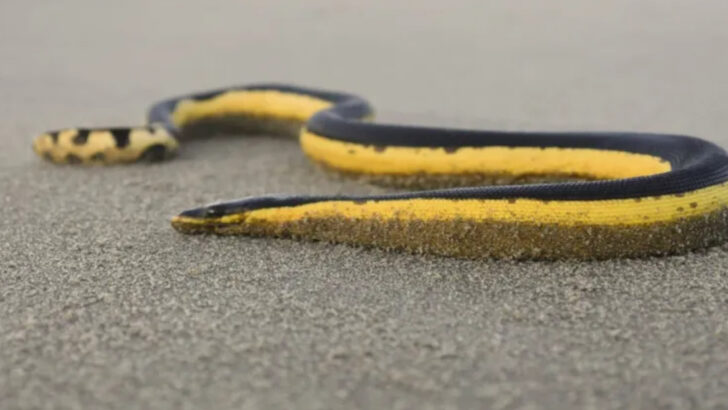It floats. It glides. It kills. Meet the yellow-bellied sea snake.
With its jet-black back and blazing yellow belly, this serpent doesn’t hide—it warns. And for good reason. One wrong move around this ocean drifter, and you’re on the receiving end of venom powerful enough to shut down muscles—fast.
It doesn’t need to bite often.
It just needs one clean strike.
Born for life at sea, it never touches land. It drinks freshwater from rain that floats on the ocean’s surface. It hunts with eerie precision, using stealth and silence.
Beautiful? Yes.
Deadly? Absolutely.
Here are 14 reasons the yellow-bellied sea snake owns its title as one of the ocean’s deadliest.
Potent Venom

Known for its potent venom, the yellow-bellied sea snake has few rivals in the ocean. Its venom contains powerful neurotoxins that can incapacitate prey swiftly. This makes it a formidable predator despite its small size.
The venom affects nerve endings, often leading to muscle paralysis in unfortunate victims. Although they rarely bite humans, their venom can still pose a significant threat.
Historically, their venom has intrigued scientists, leading to numerous studies. The snake’s venom can act rapidly, ensuring its survival in the wild by allowing it to capture prey efficiently.
Unique Adaptations
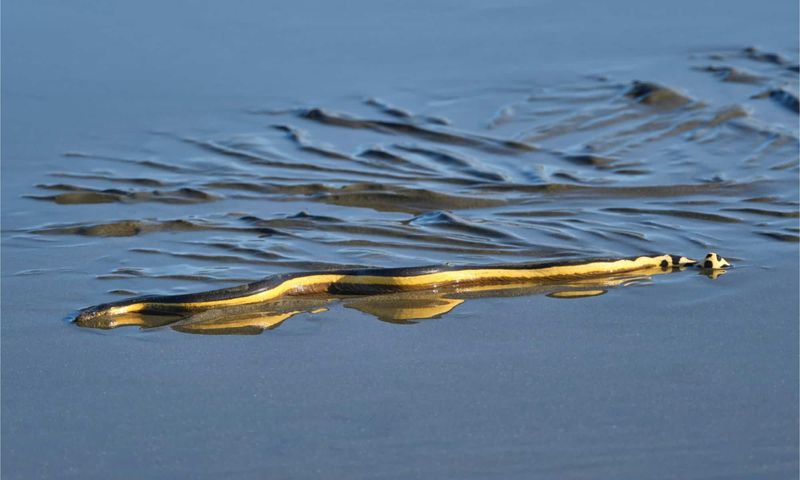
The yellow-bellied sea snake possesses adaptations that set it apart. Its paddle-shaped tail aids in swift swimming, making it an agile hunter. The snake’s scales are uniquely shaped to reduce friction underwater.
These adaptations enable it to navigate vast oceanic distances with ease. Unlike many other sea creatures, it can thrive in various marine environments.
Its ability to stay submerged for extended periods is another remarkable trait. This adaptability ensures the snake remains a top predator in its ecosystem, capable of outmaneuvering many potential threats.
Global Distribution

The yellow-bellied sea snake boasts a wide distribution across tropical oceans. It can be found in the Indian and Pacific Oceans, often near coastlines and coral reefs. This extensive reach ensures its influence in various marine ecosystems.
Its presence in diverse locations highlights its adaptability. Populations thrive in different conditions, from calm lagoons to turbulent open waters.
Historically, their distribution has fascinated researchers. The snake’s ability to traverse such vast distances underscores its resilience and adaptability in the face of environmental challenges.
Efficient Hunting Techniques
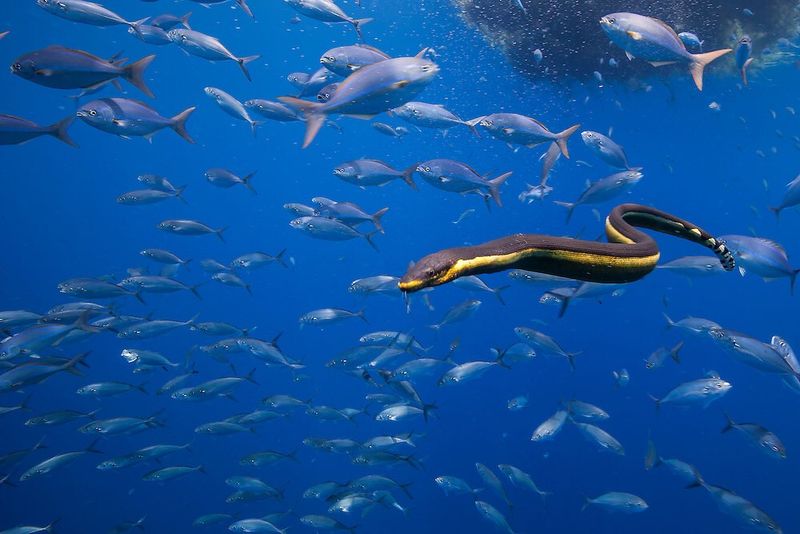
As a predator, the yellow-bellied sea snake demonstrates efficient hunting techniques. It employs stealth and precision, often ambushing prey in coral reefs. Its streamlined body allows for quick, agile movements under the sea.
The snake’s method of hunting is both calculated and effective. By using its environment to its advantage, it can trap unsuspecting fish in tight spots.
These techniques have evolved over time, making it a successful hunter. Its ability to adapt its hunting style to different environments underscores its prowess as a marine predator.
Survival in Harsh Conditions
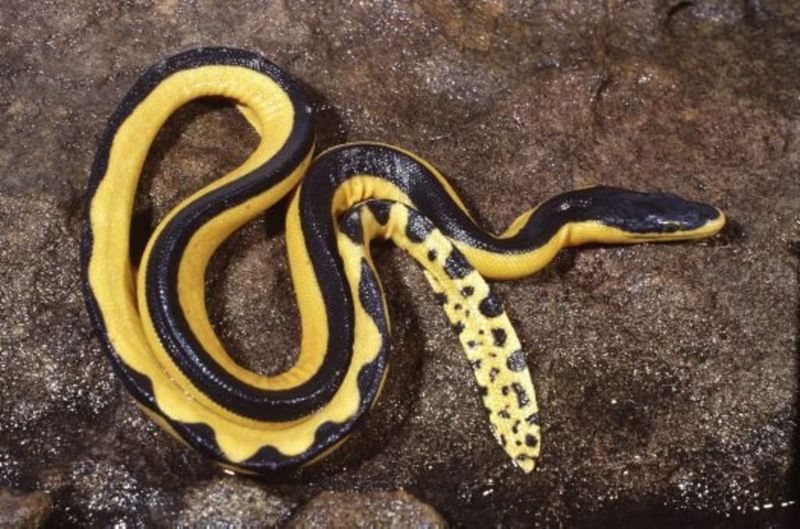
Surviving the harshest of conditions, the yellow-bellied sea snake is a resilient species. It can endure extreme weather, from tropical storms to turbulent sea currents. This resilience is a testament to its evolutionary success.
Its ability to survive in various marine environments is remarkable. Whether in open seas or near coastal areas, it thrives against all odds.
Historically, these snakes have been observed in challenging environments, adapting quickly. Their survival skills ensure they remain a prominent fixture in the marine food chain, capable of overcoming environmental adversities.
Remarkable Breathing Mechanism
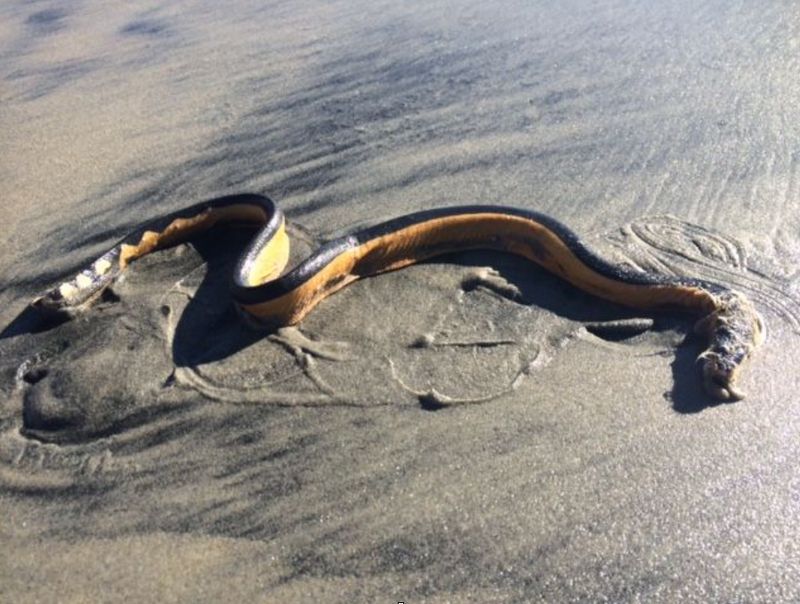
The yellow-bellied sea snake has a unique breathing mechanism. It can absorb oxygen directly through its skin while submerged. This adaptation allows it to remain underwater for long periods without surfacing.
Its lung capacity is impressive, enabling extended dives. This breathing ability is crucial for its survival, allowing it to hunt efficiently.
Scientists have long been intrigued by this mechanism. It’s a fascinating example of evolutionary innovation, ensuring the snake’s dominance in its aquatic habitat. This breathing technique enables it to evade predators and capture prey with precision.
Effortless Camouflage

Effortless camouflage is a hallmark of the yellow-bellied sea snake. Its coloration allows it to blend seamlessly with coral reefs and ocean floors. This ability to remain undetected is crucial for a predator.
The snake’s coloration varies subtly to match its surroundings. This deceptive appearance helps it avoid detection by both prey and predators.
Historically, this camouflage has been a subject of study. It highlights the snake’s role in the food chain, showcasing its natural ability to adapt and survive in complex habitats.
Unusual Reproduction
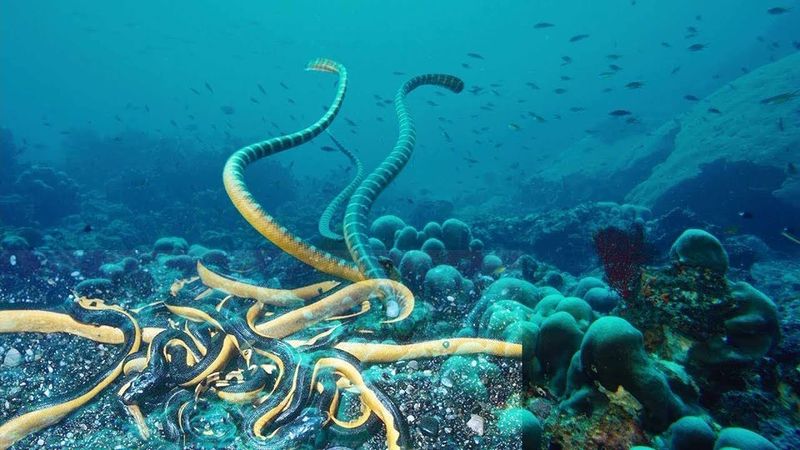
The yellow-bellied sea snake exhibits unusual reproductive habits. Unlike many reptiles, it gives birth to live young at sea, a rare trait among snakes. This viviparous reproduction ensures offspring are born ready to survive.
Giving birth in open water poses challenges, yet this snake has adapted well. The young are immediately capable of swimming and hunting.
This reproductive strategy has fascinated researchers. It demonstrates an evolutionary advantage, ensuring the young are less vulnerable to terrestrial predators. This unusual method highlights the snake’s adaptability in its oceanic environment.
Longevity in the Wild
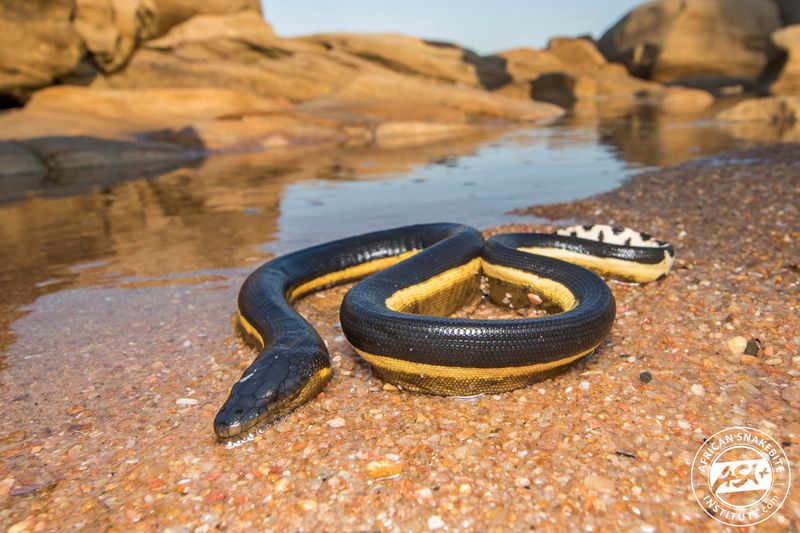
The longevity of the yellow-bellied sea snake is noteworthy. These snakes can live for many years in the wild, adapting to changing conditions and environments. Their long lifespan contributes to their success as predators.
Over the years, they have evolved to withstand various threats in the ocean. Their diet and habitat selection play a role in their extended life.
Researchers study their longevity to understand survival strategies. Their ability to thrive for years highlights their resilience and adaptation, ensuring they remain a vital part of the marine ecosystem.
Complex Social Structure
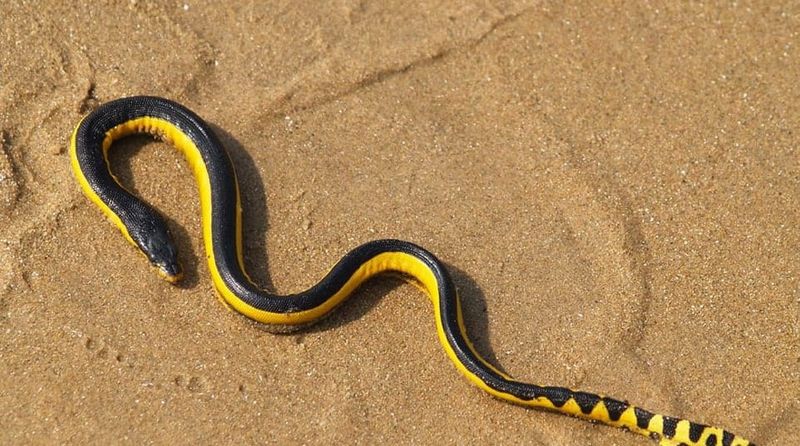
Despite being solitary hunters, yellow-bellied sea snakes exhibit complex social structures when necessary. They often congregate in large numbers during certain conditions, such as mating or migration.
These gatherings provide opportunities for interaction and communication among individuals. This social behavior is a fascinating aspect of their life cycle.
Researchers have observed these interactions to understand their social dynamics. These social structures play a crucial role in their survival, allowing them to adapt to environmental changes effectively.
Role in Marine Ecosystem
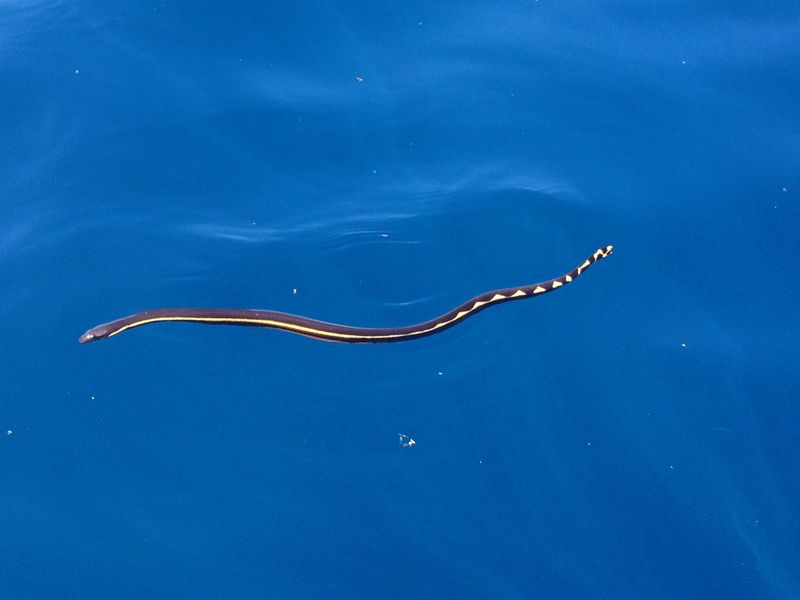
The yellow-bellied sea snake plays a vital role in marine ecosystems. As a predator, it helps maintain the balance by controlling fish populations. Its presence influences the structure and function of its habitat.
Predation by these snakes impacts prey species, ensuring a healthy ecosystem. They are an integral part of the ocean’s food web.
Understanding their role helps conservationists manage marine environments effectively. Their impact on the ecosystem underscores their importance in maintaining oceanic biodiversity and balance.
Strong Defense Mechanisms
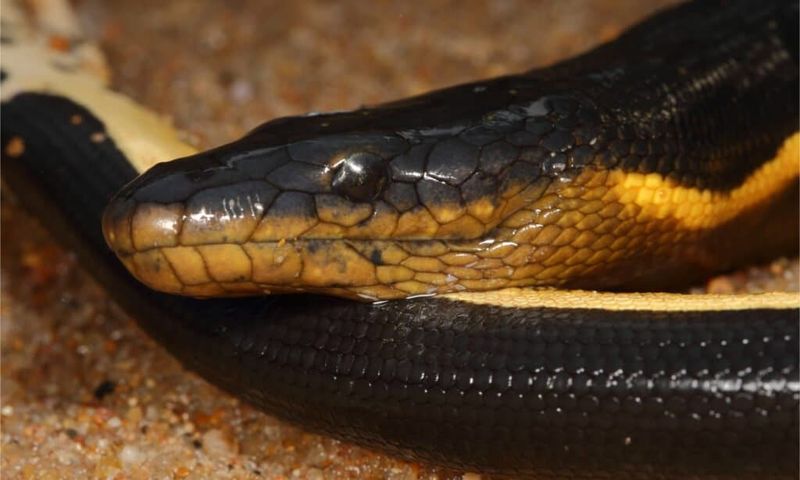
The yellow-bellied sea snake is equipped with strong defense mechanisms. When threatened, it can exhibit defensive behaviors such as flattening its body or releasing venomous bites.
These defense strategies deter potential predators and threats. Their ability to protect themselves ensures their survival in harsh marine environments.
Scientists study these mechanisms to understand predator-prey interactions. The snake’s defense tactics are a testament to its adaptation and survival skills, showcasing its capability to withstand threats in the ocean.
Efficient Energy Utilization
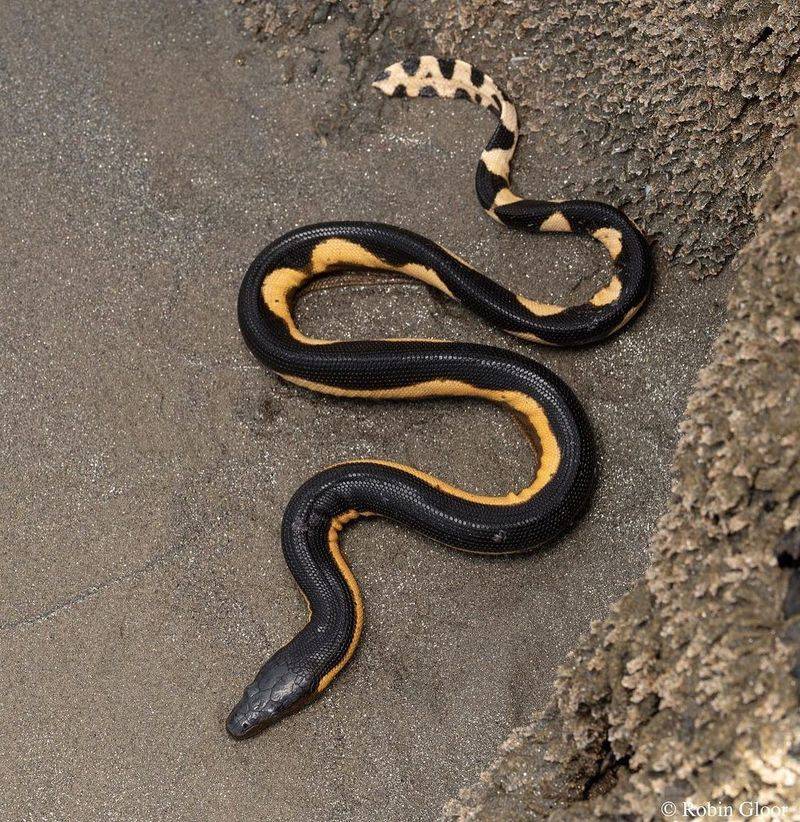
Efficient energy utilization is key to the yellow-bellied sea snake’s survival. It conserves energy by being an adept swimmer, using minimal effort to glide through water. This efficiency allows it to cover vast distances.
Its streamlined body reduces drag, enhancing its speed and mobility. This energy conservation is vital for its long-term survival in the wild.
Researchers explore their energy use to understand their migratory patterns. Efficient energy utilization underscores their evolutionary success, enabling them to thrive in diverse marine habitats.
Unique Predatory Behavior
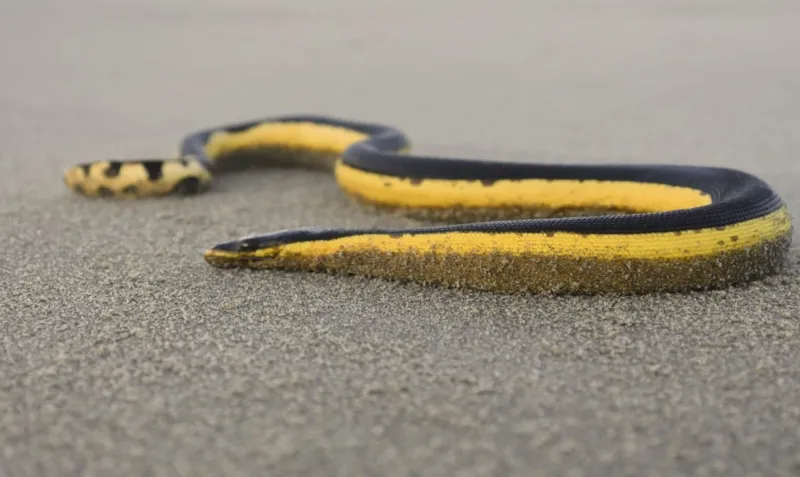
The yellow-bellied sea snake exhibits unique predatory behavior. It relies on stealth and surprise, often hiding among coral before striking. Its patient approach ensures unsuspecting prey.
This predatory strategy is finely tuned, allowing for precise attacks. The snake’s keen senses play a crucial role in its hunting success.
Studying their behavior offers insights into their role as top predators. Their unique hunting methods highlight their adaptability and cunning in the ocean’s challenging environment.

